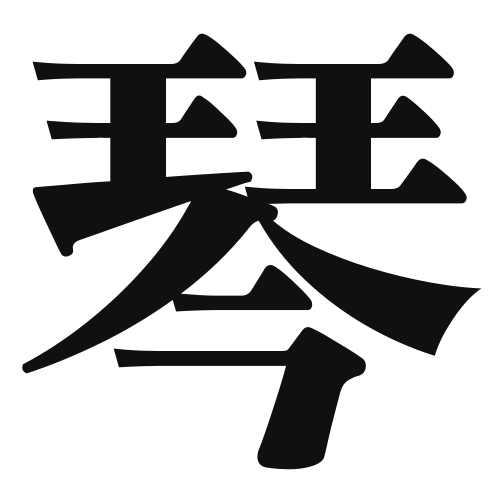1. Overview of Meaning
The kanji “琴” (koto) refers to a traditional Japanese stringed musical instrument, similar to a zither. It is often associated with elegance and cultural heritage in Japan.
2. Formation and Radicals
The kanji “琴” is a phonetic-ideographic character (形声文字) that combines the meaning of a musical instrument with phonetic elements. The left part of the character is the radical for “strings” (弦), while the right part suggests the sound.
The radical for “琴” is 弦, which relates to stringed instruments.
3. Examples of Usage
Common words and phrases that include “琴” are:
- 琴楽 (koto-gaku) – Koto music
- 琴の音 (koto no ne) – The sound of the koto
Example sentence in daily conversation:
「今夜、琴の演奏を聴きに行きます。」(Kon’ya, koto no ensō o kiki ni ikimasu.) – “Tonight, I will go to listen to a koto performance.”
4. Synonyms and Antonyms
Similar kanji with related meanings include:
- 弦 (gen) – String, which specifically refers to the strings of instruments.
Antonyms or contrasting kanji include:
- 打楽器 (dakuraki) – Percussion instruments, which are played by striking rather than plucking strings.
5. Cultural and Historical Background
The koto has a significant place in Japanese culture, often featured in traditional music and ceremonies. It is associated with grace and refinement.
Proverbs and idiomatic expressions related to “琴” include:
- 琴線に触れる (kinsen ni fureru) – To touch someone’s heart or emotions, likening the emotional response to the strings of a koto being plucked.
